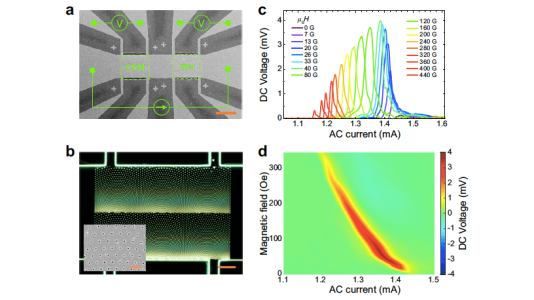
Scientific Achievement
A superconducting diode is dissipation-less and desirable for electronic circuits with ultralow power consumption. Such a device was achieved in a conventional super-conducting film patterned with a conformal array of nanoscale holes.
Significance and Impact
The switchable and reversible rectification signals can be three orders of magnitude larger than those from a flux-quantum diode.
Research Details
- The superconducting diode effect is achieved in conventional MoGe superconducting films (50 nm thick) patterned with a conformal array of nanoscale holes (110 and 220 nm diameter) to break the spatial inversion symmetry.
- The primary CNM capabilities used included optical and electron beam lithography and reactive ion etching.
Work was performed in part at CNM.
Argonne National Laboratory seeks solutions to pressing national problems in science and technology. The nation’s first national laboratory, Argonne conducts leading-edge basic and applied scientific research in virtually every scientific discipline. Argonne researchers work closely with researchers from hundreds of companies, universities, and federal, state and municipal agencies to help them solve their specific problems, advance America’s scientific leadership and prepare the nation for a better future. With employees from more than 60 nations, Argonne is managed by UChicago Argonne, LLC for the U.S. Department of Energy’s Office of Science.
The U.S. Department of Energy’s Office of Science is the single largest supporter of basic research in the physical sciences in the United States and is working to address some of the most pressing challenges of our time. For more information, visit https://energy.gov/science.